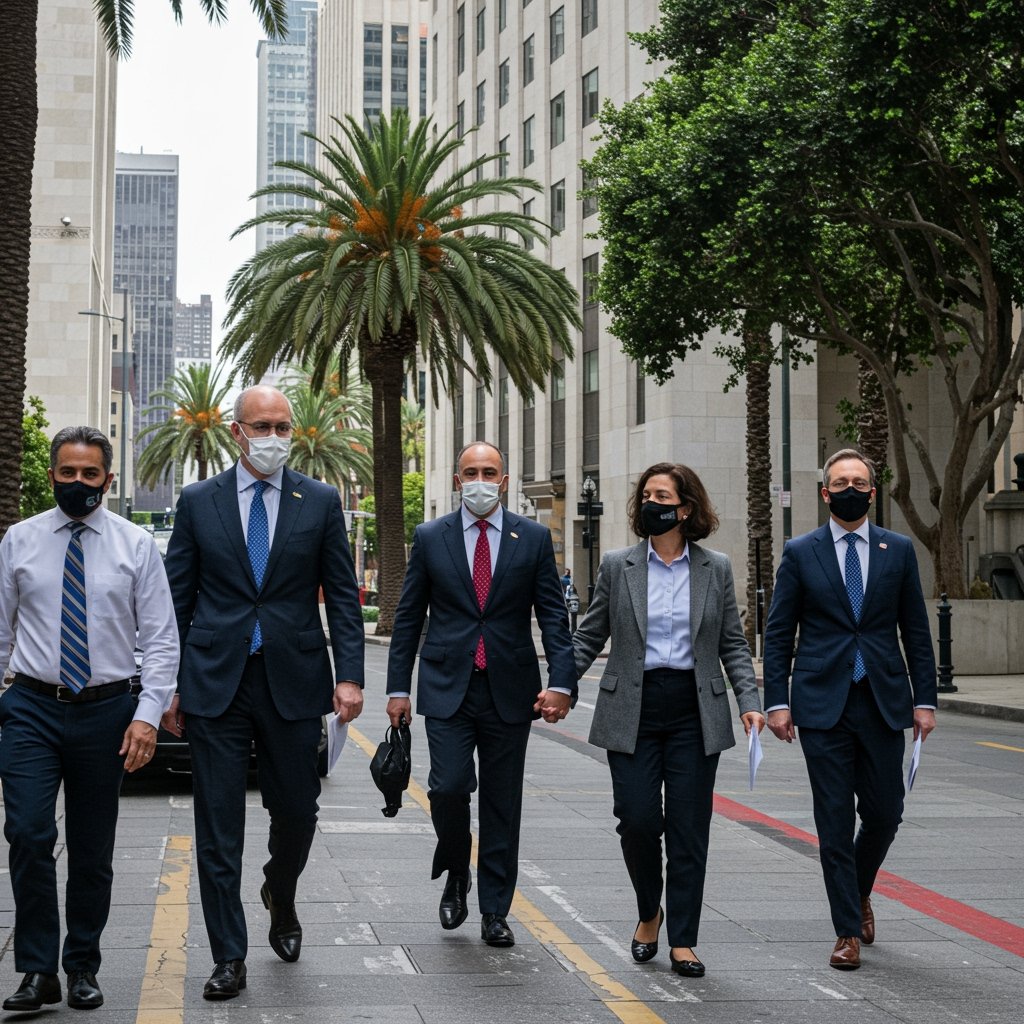California Moves Towards AI Safety Regulation with Passage of AB 2205
Sacramento, CA – In a pivotal legislative development, California is taking significant steps towards establishing regulatory oversight for advanced artificial intelligence models. Assembly Bill 2205, a measure aimed at imposing new safety testing requirements and governmental scrutiny on powerful AI systems, successfully advanced from the California Assembly Technology Committee on February 15, 2025. The bill, championed by Assemblymember Anya Sharma, marks a substantial legislative effort to proactively address the potential risks and societal impacts associated with increasingly sophisticated AI technologies.
Authored with the stated goal of ensuring responsible innovation, AB 2205 proposes a framework that would necessitate developers and deployers of certain advanced AI models to conduct rigorous safety evaluations before these systems are widely released or integrated into critical applications. The specifics of the bill define ‘advanced artificial intelligence models’ broadly, likely encompassing the most powerful generative AI systems and foundational models that have demonstrated capabilities raising concerns about potential misuse, bias, or unintended consequences. This could include large language models (LLMs) and other systems with emergent properties or significant potential for societal impact.
The Core Provisions of AB 2205
The heart of AB 2205 lies in its dual focus: establishing regulatory oversight and mandating safety testing. Under the proposed legislation, entities developing or deploying advanced AI models within California would be required to comply with state-defined safety standards. While the precise nature of these standards is subject to further legislative refinement and potential regulatory rulemaking, discussions around the bill have centered on testing for vulnerabilities, evaluating potential for generating harmful content, assessing susceptibility to manipulation, and analyzing discriminatory outcomes. The bill’s proponents argue that such preemptive testing is crucial to identify and mitigate risks before widespread deployment, thereby protecting the public from potential harms ranging from misinformation campaigns and privacy invasions to algorithmic bias and job displacement.
The regulatory oversight component suggests the establishment of a state authority – possibly a new office or an expanded role for an existing agency – tasked with monitoring compliance, potentially reviewing safety test results, and enforcing the bill’s provisions. This level of state-level involvement in AI development and deployment is seen by proponents as a necessary countermeasure to the rapid, often opaque, advancement of AI technology in the private sector. Assemblymember Sharma has emphasized that the intent is not to stifle innovation but to build public trust and ensure that AI development proceeds in a manner that is safe and benefits society as a whole.
Impact on Silicon Valley and Beyond
The implications of AB 2205, should it become law, are particularly significant for the tech industry concentrated in Silicon Valley. Giants like Google, Meta, and OpenAI, which are at the forefront of developing and deploying advanced AI models, would likely face substantial new compliance burdens. These companies, along with numerous smaller AI startups and established tech firms, would need to invest considerable resources in developing and implementing the required safety testing protocols and navigating the new regulatory landscape. The potential costs and operational changes have been a central point of concern for industry representatives.
The bill’s passage through the Assembly Technology Committee signals growing legislative appetite in California to assert governmental authority over emerging technologies. Given California’s status as a global hub for technology innovation, particularly in AI, this legislation could potentially set a precedent for other states or even influence federal discussions on AI regulation. The bill’s trajectory is being closely watched across the nation and internationally, as its framework could provide a model for addressing the complex challenges posed by advanced AI.
The Intense Debate: Innovation vs. Safety
AB 2205 has ignited an intense debate, pitting tech industry lobbyists against consumer protection groups. Industry representatives argue that overly stringent regulations and testing requirements could hinder innovation, slow down the development and deployment of beneficial AI applications, and place California companies at a competitive disadvantage globally. They emphasize the industry’s internal efforts to develop safety guidelines and ethical frameworks, arguing that prescriptive governmental mandates might be premature or misdirected in such a rapidly evolving field. Concerns have also been raised about the practicality of defining ‘advanced’ models, the feasibility of standardized safety testing for diverse AI systems, and the potential for regulatory burdens to disproportionately impact smaller companies.
Conversely, consumer protection groups and AI safety advocates strongly support the bill. They contend that the potential risks of advanced AI – including widespread disinformation, job market disruption, and potential autonomous decision-making with significant real-world consequences – are too great to be left solely to industry self-regulation. They argue that governmental oversight and mandatory third-party safety testing are essential safeguards to ensure public safety and accountability. These groups highlight past instances where technological advancements have led to unforeseen societal harms and advocate for a proactive approach to mitigate AI-specific risks. They see AB 2205 as a crucial step towards establishing a baseline of safety and responsibility in the AI ecosystem.
The Road Ahead
While AB 2205 has cleared a significant hurdle by passing the Assembly Technology Committee, its legislative journey is far from over. The bill must navigate several more committees, potentially undergo amendments based on feedback and negotiations, and secure approval from the full Assembly. If successful there, it would then proceed to the State Senate, where it would face further committee review and a floor vote. Finally, for the bill to become law, it would require the signature of the Governor.
The ongoing debate surrounding AB 2205 reflects the broader societal challenge of balancing the immense potential benefits of artificial intelligence with the imperative to manage its risks responsibly. The bill’s progress will depend heavily on the ability of legislators to find common ground among competing interests and craft a framework that promotes both innovation and public safety. As the legislative session progresses, stakeholders on all sides will be keenly observing and actively participating in shaping the final form of this potentially landmark legislation.



















